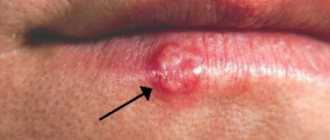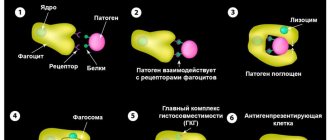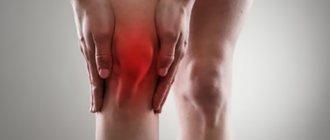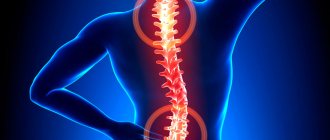Zoladex is a pharmacological drug actively used in oncology and gynecology. The drug is used in the treatment of pathologies that develop against the background of hormonal imbalance. It has proven itself in the treatment of prostate and breast cancer, endometriosis, as well as in the desensitization of the pituitary gland before IVF. The list of contraindications for the drug is quite wide, and side effects may occur during therapy. Therefore, it is advisable to use Zoladex only as prescribed by a doctor. You can buy antitumor drugs in our pharmacy.
Composition and release form
| Capsules for subcutaneous administration of prolonged action | 1 caps. |
| active substance: | |
| goserelin acetate (in terms of goserelin base) | 10.8 mg |
| excipients: low molecular weight lactic and glycolic acid copolymer (95:5) and high molecular weight lactic and glycolic acid copolymer (95:5) - up to a total weight of 36 mg (weight ratio between low molecular weight and high molecular weight copolymer - 3:1) |
In a syringe applicator with a protective mechanism ( Safety Glide
) 1 capsule for subcutaneous administration of prolonged action, 10.8 mg. 1 syringe applicator is placed in a laminated aluminum envelope, the envelope is placed in a cardboard box.
Pharmacodynamics
A synthetic analogue of natural GnRH. With continuous use, the drug Zoladex® inhibits the release of LH by the pituitary gland, which leads to a decrease in the concentration of testosterone in the blood serum in men and the concentration of estradiol in the blood serum in women. This effect is reversible after discontinuation of therapy. Initially, Zoladex®, like other GnRH agonists, may cause a temporary increase in serum testosterone concentrations in men and serum estradiol concentrations in women. In the early stages of therapy with Zoladex®, some women may experience vaginal bleeding of varying duration and intensity.
In men, by approximately the 21st day after administration of the first capsule, the concentration of testosterone decreases to castration levels and continues to remain reduced with continuous treatment every 3 months in the case of Zoladex® 10.8 mg. This decrease in testosterone concentration during the use of Zoladex® 10.8 mg in most patients leads to regression of the prostate tumor and symptomatic improvement.
After administration of Zoladex® 10.8 mg, serum estradiol concentrations in women decrease within 4 weeks after administration of the first capsule and remain reduced to a level comparable to that observed in menopausal women. With the initial use of other GnRH analogues and switching to Zoladex® 10.8 mg, suppression of estradiol levels is maintained. Suppressing the level of estradiol leads to a therapeutic effect in endometriosis and uterine fibroids.
While taking GnRH agonists, women may experience menopause. Rarely, some women do not return to menstruation after finishing therapy.
Zoladex caps s/c prolong 3.6 mg x1 (D)
Trade name: Zoladex International name: Goserelin
Pharmacological group: antitumor agent - gonadotropin-releasing hormone analog. Pharmacological group for ATC: L02AE03. Goserelin Pharmacological action: reduces androgen secretion, reduces gonadotropin production, gonadotropin-releasing hormone analogue, pharmacologically castrating, reduces luteinizing hormone secretion, antitumor, endometriosis treatment agent, follicle-stimulating hormone secretion reduces, cytostatic, estrogen secretion reduces Pharmacodynamics: Antitumor agent, synthetic analogue of natural GRF suppresses the release of LH and FSH by the pituitary gland, reduces the concentration of testosterone in the blood serum in men and the concentration of estradiol in women (the effect is reversible after discontinuation of therapy). At the beginning of treatment, it temporarily increases the concentration of testosterone in the blood serum in men and estradiol in women. In men, by 21 days after administration, the content of testosterone (and in women - estradiol) decreases to the castration level and remains stably reduced, subject to repeated injections every 28 days, while symptomatic improvement is observed in men with prostate tumors, and in women with hormone-dependent forms of breast cancer, endometriosis and uterine fibroids. In relation to hormone-dependent tumors, it has an antitumor, antiandrogenic effect, suppresses LH secretion, and causes pharmacological castration for up to 3 years. The therapeutic effect (decrease in testosterone concentration to castration level) is observed within 2-4 weeks of treatment and persists throughout the entire period of therapy.
Pharmacokinetics: Absorption in the first 8 days after administration is slower than in the subsequent days of the 28-day period between drug administrations. Bioavailability - 95-97%. Plasma protein binding is low. TCmax - 2-3 hours for men and 1.5-2 hours for women. After taking a dose of 3.6 mg for 2 months, TCmax in men is 12-15 days and 8-22 days in women, Cmax is 1.03-4.65 and 0.64-2.28, respectively. T1/2 is 2.5 hours in women and 4 hours in men, increases slightly with chronic renal failure (no dosage adjustment required). Does not accumulate.
Indications for use: Prostate cancer (hormone dependent). For a dose of goserelin of 3.6 mg: breast cancer (in reproductive age or perimenopause), endometriosis, the need for preliminary thinning of the endometrium before surgery, uterine fibroids (in combination with surgical treatment), to suppress the function of the pituitary gland in preparation for stimulating superovulation as part of the program ECO.
Contraindications: Hypersensitivity, pregnancy, lactation, children (up to 14 years).
Dosage regimen: SC, into the anterior abdominal wall. To thin the endometrium, 3.6 mg is administered at intervals of 4 weeks; surgery should be planned within 2 weeks after repeated administration of the drug. Treatment of benign gynecological diseases is carried out for 6 months. Repeated courses are not recommended due to the risk of developing bone demineralization. For the treatment of prostate cancer - 10.8 mg every 12 weeks. If necessary, local anesthesia may be administered before administration. No dosage changes are required in patients with hepatic or renal insufficiency.
Side effects: From the cardiovascular system: lability of blood pressure, increased blood pressure, arrhythmia, myocardial infarction, occlusive disorders of the peripheral circulation (pain or coldness of the hands and feet), worsening CHF (swelling of the feet, ankles). From the nervous system: dizziness, headache, sleep disturbances, excessive fatigue or weakness, anxiety, depression, cerebrovascular accident, in men - spinal cord compression syndrome, in women - mood lability. From the respiratory system: exacerbation of COPD, upper respiratory tract infections. From the digestive system: loss of appetite, nausea, vomiting, constipation or diarrhea. From the genitourinary system: in men - decreased potency, gynecomastia, painful tension of the mammary glands, obstruction of the urinary tract; in women - decreased libido, dry vaginal mucosa, bleeding at the beginning of treatment, menopause, amenorrhea (after discontinuation of therapy, the resumption of menstruation may not happen). Allergic reactions (skin rash, anaphylactoid reactions, arthralgia). Other: sudden exacerbation at the beginning of treatment (ossalgia, numbness or paresthesia in the hands or feet, difficulty urinating, weakness in the legs), exacerbation of symptoms of breast cancer, weight gain, anemia, hypercalcemia (in patients with bone metastases), gout (arthralgia ), increased sweating, “flushes” of blood to the skin of the face and upper chest.
Special instructions: It should be borne in mind that at the beginning of treatment, an increase in the frequency of exacerbation of the disease due to an increase in the concentration of testosterone in the blood serum increases the risk of obstruction of the urinary tract and compression of the spinal cord with metastases (it is necessary to systematically monitor the condition during the first month of therapy, including determination of serum concentrations of testosterone, prostate antigen, acid phosphatase activity). The use of LHR agonists in women may cause bone demineralization. After discontinuation of therapy, progressive restoration of bone density is possible. During treatment, the tone of the cervix increases, and difficulties may arise in dilating the cervix. In women of reproductive age, possible pregnancy should be excluded before starting treatment. During therapy, it is necessary to use effective non-hormonal methods of contraception until menstruation resumes.
With caution: Obstruction of the urinary tract (history in men), metastases in the spine (risk of compression of the spinal cord as a result of exacerbation of the disease at the beginning of treatment).
Manufacturer: AstraZeneca UK Ltd, Great Britain Marketing authorization holder: AstraZeneca UK Ltd, Great Britain Forms of release: capsule for subcutaneous administration of prolonged action 3.6, 10.8 mg (syringes) Composition: goserelin acetate [in terms of goserelin] 3.6/10.8 mg Shelf life: 3 year Registration data: P No. 013307/01 dated 02/17/2006 Status of the registration certificate: valid Pharmaceutical article number: ND 42-4985-00 HS codes: 3004 39 100 0
Pharmacokinetics
Administration of the capsule every 12 weeks ensures that effective concentrations are maintained. Cumulation in tissues does not occur. The drug Zoladex® binds poorly to protein, T1/2 of it from blood serum is 2-4 hours in patients with normal renal function. T1/2 increases in patients with impaired renal function. When Zoladex® 10.8 mg is administered every 12 weeks, this change will not have a significant effect, so there is no need to change the dose for these patients. In patients with liver failure, significant changes in pharmacokinetics are not observed.
Instructions for use
Single doses are calculated by a gynecologist or oncologist taking into account the type of pathology, its severity, and the severity of symptoms. The doctor must take into account the patient’s age and the presence of other chronic diseases. But usually, elderly people and patients suffering from kidney or liver failure do not require dosage adjustment.
During the treatment procedure, the capsule is injected subcutaneously into the anterior abdominal wall using a syringe. If necessary, it is repeated every four weeks. The duration of the therapeutic course for gynecological pathologies with a benign course is six months. For patients with cancer, Zoladex is indicated for treatment for a year or more. During preoperative preparation, the drug is administered twice with a time interval of 28 days. Surgical destruction of the endometrium by controlled thermal or laser exposure is recommended to be performed within the first two weeks after the 2nd injection.
Side effects
The frequency of occurrence of undesirable effects is presented as follows: often (>1/100, <1/10); uncommon (>1/1000, <1/100); rare (>1/10,000, <1/1000); very rare (<1/10,000), including isolated reports.
Neoplasms:
very rarely - pituitary tumor; unspecified frequency - degeneration of fibromatous nodes in women with uterine fibroids.
From the immune system:
uncommon - hypersensitivity reactions; rarely - anaphylactic reactions.
From the endocrine system:
very rarely - hemorrhage into the pituitary gland.
Metabolic disorders:
often - impaired glucose tolerance. Decreased glucose tolerance was observed in men receiving GnRH agonists. Decreased glucose tolerance was manifested by the development of diabetes mellitus or worsening blood glucose control in patients with a history of diabetes mellitus; infrequently - hypercalcemia (in women).
From the nervous system and mental sphere:
very often - decreased libido associated with the pharmacological action of the drug and in rare cases, leading to its withdrawal; often - decreased mood, depression (in women), paresthesia, spinal cord compression (in men), headache (in women); very rarely - psychotic disorder.
From the SSS side:
very often - hot flashes associated with the pharmacological action of the drug and in rare cases leading to its withdrawal; often - myocardial infarction (in men); heart failure (in men), the risk of which increases with the simultaneous administration of antiandrogen drugs. Changes in blood pressure levels, manifested as hypotension or hypertension. These changes are usually transient and resolve either during therapy with Zoladex® or after its cessation. In rare cases, these changes required medical intervention, including discontinuation of Zoladex®.
From the skin and subcutaneous tissue:
very often - increased sweating associated with the pharmacological effect of the drug and in rare cases leading to its withdrawal; often - alopecia (in women), usually slightly pronounced, incl. in young patients with benign neoplasms; the rash was mostly mild and often resolved with continued therapy; unspecified frequency - alopecia (in men), which manifested itself as hair loss throughout the body due to a decrease in androgen levels.
From the musculoskeletal system:
often - arthralgia (in women), bone pain (in men). At the beginning of treatment, prostate cancer patients may often experience a temporary increase in bone pain, which is treated symptomatically; infrequently - arthralgia (in men).
From the genitourinary system:
very often - erectile dysfunction (in men), dryness of the vaginal mucosa and an increase in the size of the mammary glands (in women); often - gynecomastia (in men); infrequently - soreness of the mammary glands (in men), obstruction of the ureters (in men); rarely - ovarian cyst (in women); unspecified frequency - vaginal bleeding (in women).
Other:
very often - a reaction at the injection site (in women); often - a reaction at the injection site (in men).
Laboratory research:
often - decreased bone mineral density, increased body weight.
special instructions
Caution should be exercised when prescribing Zoladex® to males at particular risk of ureteral obstruction or spinal cord compression. These patients should be closely monitored during the first month of therapy. If spinal cord compression or renal failure due to ureteral obstruction occurs or develops, standard treatment for these complications should be prescribed.
In women, Zoladex® 10.8 mg is indicated only for the treatment of endometriosis and uterine fibroids. For women requiring treatment with goserelin for other indications, Zoladex® 3.6 mg is used.
When using Zoladex® in women, non-hormonal methods of contraception should be used until menstruation returns.
The use of GnRH agonists in women may cause a decrease in bone mineral density. After treatment, most women experience restoration of bone mineral density. In patients receiving Zoladex 3.6 mg for the treatment of endometriosis, the addition of hormone replacement therapy (daily estrogen and progestogen) reduced bone mineral density loss and vasomotor symptoms. Currently, there is no experience with the use of hormone replacement therapy during treatment with Zoladex® 10.8 mg.
The resumption of menstruation after the end of treatment with Zoladex® may be delayed in some patients. In rare cases, some women may experience menopause during treatment with GnRH analogues without menstruation returning after the end of therapy.
The use of Zoladex® may lead to an increase in cervical resistance; caution must be exercised when dilating the cervix.
There is no data on the effectiveness and safety of therapy with Zoladex® for benign gynecological diseases lasting more than 6 months.
Preliminary data suggest that the use of a bisphosphonate in combination with GnRH agonists in men helps reduce loss of bone mineral density. Due to the possibility of developing decreased glucose tolerance while taking GnRH agonists in men, it is recommended to periodically monitor blood glucose levels.
Impact on the ability to drive a car or perform work that requires increased speed of physical and mental reactions.
Zoladex® is not known to impair these activities.
Contraindications to treatment
An absolute contraindication to Zoladex therapy is individual intolerance to goserelin or auxiliary components. Treatment is carried out under strict medical supervision if patients have the following pathological conditions:
- ureteral obstruction;
- likelihood of compression of the spinal canal;
- polyendocrine syndrome accompanied by ovarian dysfunction.
Zoladex is not used in childhood and adolescence. The list of absolute contraindications also includes periods of childbearing and breastfeeding.
Synonyms of nosological groups
Category ICD-10 Synonyms of diseases according to ICD-10
| C50 Malignant neoplasms of the breast | Hormone-dependent form of recurrent breast cancer in menopausal women |
| Hormone-dependent breast cancer | |
| Disseminated breast carcinoma | |
| Disseminated breast cancer | |
| Disseminated breast cancer with HER2 overexpression | |
| Malignant breast tumor | |
| Malignant neoplasm of the breast | |
| Breast carcinoma | |
| Contralateral breast cancer | |
| Locally advanced or metastatic breast cancer | |
| Locally advanced breast cancer | |
| Locally recurrent breast cancer | |
| Metastatic breast carcinoma | |
| Metastases of breast tumors | |
| Metastatic breast carcinoma | |
| Inoperable breast carcinoma | |
| Inoperable breast cancer | |
| Breast tumors | |
| Breast cancer in women with metastases | |
| Breast cancer in men with metastases | |
| Breast cancer | |
| Breast cancer in men | |
| Mammary cancer | |
| Breast cancer with distant metastases | |
| Postmenopausal breast cancer | |
| Breast cancer is hormone dependent | |
| Breast cancer with local metastases | |
| Breast cancer with metastases | |
| Breast cancer with regional metastases | |
| Breast cancer with metastases | |
| Nipple and areola cancer | |
| Common hormone-dependent forms of breast cancer | |
| Advanced breast cancer | |
| Recurrent breast cancer | |
| Recurrence of breast tumors | |
| RMJ | |
| Estrogen-dependent breast cancer | |
| Estrogen-dependent breast cancer | |
| C61 Malignant neoplasm of the prostate gland | Adenocarcinoma of the prostate |
| Hormone-dependent prostate cancer | |
| Hormone-resistant prostate cancer | |
| Malignant prostate tumor | |
| Malignant neoplasm of the prostate | |
| Prostate carcinoma | |
| Locally advanced non-metastatic prostate cancer | |
| Locally advanced prostate cancer | |
| Locally advanced prostate cancer | |
| Metastatic prostate carcinoma | |
| Metastatic prostate cancer | |
| Metastatic hormone-resistant prostate cancer | |
| Non-metastatic prostate cancer | |
| Inoperable prostate cancer | |
| Prostate cancer | |
| Prostate cancer | |
| Advanced prostate cancer | |
| Testosterone-dependent prostate cancer | |
| D26 Other benign neoplasms of the uterus | Meigs syndrome |
| Myoma | |
| Uterine fibroids | |
| Uterine fibroids | |
| Tumors of the uterus | |
| Fibriomas | |
| Fibroids | |
| Uterine fibroids | |
| N80 Endometriosis | Heterotropia endometrioid |
| Z100* CLASS XXII Surgical practice | Abdominal surgery |
| Adenomectomy | |
| Amputation | |
| Angioplasty of coronary arteries | |
| Carotid angioplasty | |
| Antiseptic treatment of skin for wounds | |
| Antiseptic hand treatment | |
| Appendectomy | |
| Atherectomy | |
| Balloon coronary angioplasty | |
| Vaginal hysterectomy | |
| Corona bypass | |
| Interventions on the vagina and cervix | |
| Bladder interventions | |
| Intervention in the oral cavity | |
| Restorative and reconstructive operations | |
| Hand hygiene of medical personnel | |
| Gynecological surgery | |
| Gynecological interventions | |
| Gynecological surgeries | |
| Hypovolemic shock during surgery | |
| Disinfection of purulent wounds | |
| Disinfection of wound edges | |
| Diagnostic interventions | |
| Diagnostic procedures | |
| Diathermocoagulation of the cervix | |
| Long surgical operations | |
| Replacing fistula catheters | |
| Infection during orthopedic surgery | |
| Artificial heart valve | |
| Cystectomy | |
| Short-term outpatient surgery | |
| Short-term operations | |
| Short-term surgical procedures | |
| Cricothyroidotomy | |
| Blood loss during surgery | |
| Bleeding during surgery and in the postoperative period | |
| Culdocentesis | |
| Laser coagulation | |
| Laser coagulation | |
| Laser coagulation of the retina | |
| Laparoscopy | |
| Laparoscopy in gynecology | |
| CSF fistula | |
| Minor gynecological operations | |
| Minor surgical interventions | |
| Mastectomy and subsequent plastic surgery | |
| Mediastinotomy | |
| Microsurgical operations on the ear | |
| Mucogingival surgeries | |
| Stitching | |
| Minor surgeries | |
| Neurosurgical operation | |
| Immobilization of the eyeball in ophthalmic surgery | |
| Orchiectomy | |
| Complications after tooth extraction | |
| Pancreatectomy | |
| Pericardectomy | |
| Rehabilitation period after surgery | |
| The period of convalescence after surgical interventions | |
| Percutaneous transluminal coronary angioplasty | |
| Pleural thoracentesis | |
| Pneumonia postoperative and post-traumatic | |
| Preparing for surgical procedures | |
| Preparing for surgery | |
| Preparing the surgeon's hands before surgery | |
| Preparing the colon for surgery | |
| Postoperative aspiration pneumonia during neurosurgical and thoracic operations | |
| Postoperative nausea | |
| Postoperative bleeding | |
| Postoperative granuloma | |
| Postoperative shock | |
| Early postoperative period | |
| Myocardial revascularization | |
| Resection of the apex of the tooth root | |
| Gastric resection | |
| Bowel resection | |
| Resection of the uterus | |
| Liver resection | |
| Small bowel resection | |
| Resection of part of the stomach | |
| Reocclusion of the operated vessel | |
| Bonding tissue during surgery | |
| Removing stitches | |
| Condition after eye surgery | |
| Condition after surgery | |
| Condition after surgical interventions in the nasal cavity | |
| Condition after gastrectomy | |
| Condition after resection of the small intestine | |
| Condition after tonsillectomy | |
| Condition after removal of the duodenum | |
| Condition after phlebectomy | |
| Vascular surgery | |
| Splenectomy | |
| Sterilization of surgical instruments | |
| Sterilization of surgical instruments | |
| Sternotomy | |
| Dental operations | |
| Dental intervention on periodontal tissues | |
| Strumectomy | |
| Tonsillectomy | |
| Thoracic surgery | |
| Thoracic operations | |
| Total gastrectomy | |
| Transdermal intravascular coronary angioplasty | |
| Transurethral resection | |
| Turbinectomy | |
| Removal of a tooth | |
| Cataract removal | |
| Cyst removal | |
| Tonsil removal | |
| Removal of fibroids | |
| Removal of mobile baby teeth | |
| Removal of polyps | |
| Removing a broken tooth | |
| Removal of the uterine body | |
| Removing stitches | |
| Urethrotomy | |
| CSF duct fistula | |
| Frontoethmoidohaymorotomy | |
| Surgical infection | |
| Surgical treatment of chronic limb ulcers | |
| Surgery | |
| Surgery in the anal area | |
| Colon surgery | |
| Surgical practice | |
| Surgical procedure | |
| Surgical interventions | |
| Surgical interventions on the gastrointestinal tract | |
| Surgical interventions on the urinary tract | |
| Surgical interventions on the urinary system | |
| Surgical interventions on the genitourinary system | |
| Heart surgery | |
| Surgical procedures | |
| Surgical operations | |
| Vein surgery | |
| Surgical intervention | |
| Vascular surgery | |
| Surgical treatment of thrombosis | |
| Surgery | |
| Cholecystectomy | |
| Partial gastrectomy | |
| Transperitoneal hysterectomy | |
| Percutaneous transluminal coronary angioplasty | |
| Percutaneous transluminal angioplasty | |
| Coronary artery bypass surgery | |
| Tooth extirpation | |
| Extirpation of baby teeth | |
| Pulp extirpation | |
| Extracorporeal circulation | |
| Tooth extraction | |
| Tooth extraction | |
| Cataract extraction | |
| Electrocoagulation | |
| Endourological interventions | |
| Episiotomy | |
| Ethmoidotomy | |
| Z31.1 Artificial insemination | Egg retrieval |
| ICSI (Intra Cytoplasmic Sperm Injection) | |
| Controlled ovarian stimulation | |
| Controlled superovulation | |
| Controlled superovulation during artificial insemination | |
| Therapeutic fertilization | |
| Artificial insemination | |
| Premature ovulation | |
| IVF program | |
| In Vitro Fertilization Program | |
| Superovulation | |
| Z31.2 In vitro fertilization | Controlled superovulation during in vitro fertilization |
| Luteal phase support in spontaneous or induced menstrual cycles | |
| Luteal phase support during preparation for in vitro fertilization | |
| Reproductive technologies | |
| Superovulation | |
| ECO | |
| In Vitro Fertilization |










